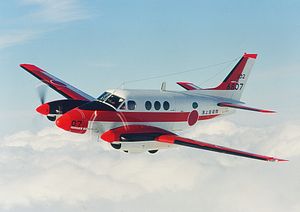Early this week, Japan and the Philippines conducted what was characterized by some as a joint maritime patrol near the South China Sea. While few specifics have been publicly disclosed, the engagement has nonetheless once again put the spotlight on the defense relationship between the two countries amid continued troubling developments in the South China Sea.
As I have noted before in these pages, though Japan-Philippines defense ties are by no means a new story, cooperation has been advancing significantly over the past few years and has continued to do so despite the initial challenges posed by the rise of Philippine President Rodrigo Duterte. Japan-Philippines defense cooperation has been growing over the years across various aspects, including not just defense equipment and transfer, but also critical capacity-building (See: “Japan-Philippines Defense Relations Under Duterte: Full Steam Ahead?”).
One of the areas in which this collaboration has played out has been in the South China Sea, where China’s continued militarization and control continues to pose serious concerns for the region (See: “Beware the Illusion of China-Philippines South China Sea Breakthroughs”). A case in point has been the donation by the Japanese Maritime Self Defense Forces (JMSDF) of five Beechcraft TC-90 trainer aircraft to Manila, which was the first instance of Japan transferring excess defense equipment to another country free of charge following ongoing changes in its domestic laws. The transfer of the aircraft has been a major boost for the Philippines given its previously limited ability to conduct regular and extensive patrols in the South China Sea, and Manila began publicly disclosing its deploying of the aircraft there starting in February (See: “New Military Aircraft Puts Japan-Philippines Defense Ties in the Spotlight”).
This week, Japan-Philippines defense ties were in the headlines again. The JMSDF P-1 patrol aircraft conducted what was characterized a goodwill exercise with a Philippine Navy TC-90 aircraft. According to the JMSDF, the exercise occurred on May 8 in the waters and airspace around Palawan Island in the Philippines.
Few additional details were publicly disclosed about the engagement. The Philippine Daily Inquirer quoted unnamed Philippine Navy sources as saying that the exercise occurred as the Japanese aircraft was on a stopover to the Philippines and that such engagements allowed Manila to familiarize itself with some of the new aircraft it had received from Japan as well as understanding how to work together to facilitate interoperability.
None of that is surprising. Japan has a long record of training Philippine forces, even though the capacity-building aspect of Tokyo’s efforts often gets less attention than others such as the transfer of defense equipment. Upping stopover engagements, including in the South China Sea, had previously been discussed by Japanese officials before as well. Indeed, before the Japan-Philippines engagement, the JMSDF had also announced publicly on May 5 that the P1-aircraft had also conducted a bilateral exercise with Indian ships and aircraft in the waters and airspace to the west of Goa in India.
Nonetheless, the engagement was an important reminder about the high level of activity that continues to be underway in the South China Sea between allies and partners, the role of major powers such as Japan in the security realm, and the defense aspect of the Japan-Philippines bilateral relationship, which continues to advance.
































